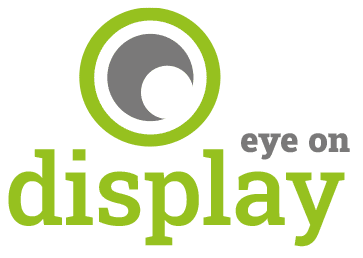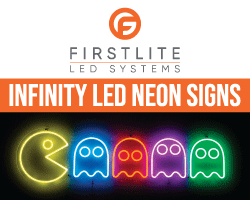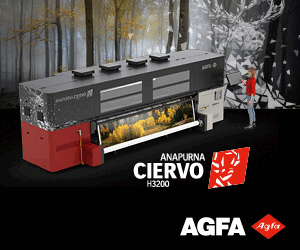Something is happening at Mediaco that looks extremely exciting for the industry.
I caught up with managing director Stephen Arthur, who told me the company is in the process of announcing a series of genuine ‘industry firsts’ which will advance existing display graphics production and sustainability performance for soft signage and rigid displays.

Industry firsts are not new to Stephen Arthur or MediaCo. Stephen and many of his team had been involved in printing onto fabrics using analogue drum technology in the early days at a company called Scanachrome. He has watched the development of sublimation technology from analogue and electrostatic printers up to the introduction of the UK’s first and only 5m EFI 520 dye-sublimation printers. Stephen commented that MediaCo, who he joined in 2012, was the first company to introduce the EFI FabriVu printer into the UK. This pioneering trend continues today with the introduction of another UK-first UV printer, which was recently installed and will be unveiled next Monday.
“We continue to invest in next-generation technology as part of our carbon reduction to net zero plan. Our goals are very simple. They are to ensure our customers have access at all times to the latest display technology, consumables and solutions. We only exist to serve our customers and our investment is focused on providing a high level of automation, productivity and efficiency. This includes a range of finishing equipment, including Zund cutters and two 5.0 x 5.0m roll-to-roll Asist Bulmer cutters.
On purchasing the first EFI FabriVU 5m machine back in 2019, Stephen said the group was looking at 3.2m equipment, but after extensive testing, made the big decision to invest in the ultimate solution at 5.0m wide. This removes the need for seams, and guarantees no issues with pattern registration, because images are produced in single pieces for 90% of exhibition or event displays.
“For experienced dye-sublimation fabric users, there are a host of very real benefits.
Printed fabrics, as well as being much lighter than other printed materials, can be folded as they will not create bruising or creases. This means they don’t need to be rolled and are lighter and easier to handle, so distribution costs are reduced.”

He adds, “Up to 5m fabrics can also be created with complex image patterns and be tensioned from corner to corner in single piece, where otherwise multiple images may have been used. This significantly reduces installation time. We went for the UK-first larger machine due to its ability to print on new materials up to 5m wide without the need for seams, yet with very high standards of image vibrancy and accuracy.”
He continues, “Use of dye-sublimation fabrics for soft signage continues to expand and this provides a range of important benefits, such as reducing waste, time and cost. In the industry as a whole, signs are getting bigger, for example, many larger exhibition stands now have 4m panels as standard. For other installations, we use modular racking systems, such as beMatrix and being able to install single panels is easier, quicker and far more cost-effective. Avoiding seams means we don’t have to worry about matching patterns or stitching fabrics together. We were first with a 5m machine, and the benefits this has given to our customers and has ensured the decision was very successful for us.”
Stephen adds:
“Of course, having a 5m machine doesn’t mean we can only print 5m wide fabrics. We have significantly increased our overall productivity by nesting work to maximise the number of finished products we can deliver with each run.
This increases efficiency and productivity and also makes genuine savings in time and energy.”
With a track record of delivering true industry firsts, when MediaCo says there are more firsts about to come, we felt it was worth taking notice. Keep an eye on Eye on Display to see what the company has in store and why it is bound to be of huge interest and importance to the whole market.


















